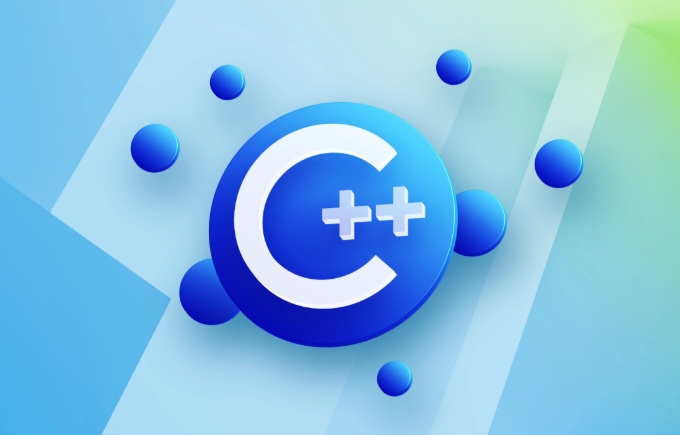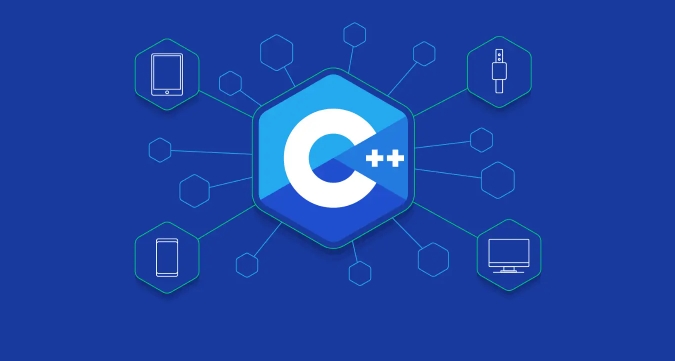C inheritance explained
Jul 09, 2025 am 01:30 AMInheritance is a core feature of object-oriented programming in C, allowing the creation of a new class (subclass) to reuse member variables and functions of existing classes (parent classes). 1. The inheritance methods include public, private and protection: public inheritance keeps the access level of base class members unchanged; protected inheritance turns base class members into protected; private inheritance turns base class members into private. 2. Access control affects the inheritance effect. The private members of the base class will not be inherited and the subclass cannot be accessed. 3. The main uses of inheritance include code reuse, support for polymorphism and interface abstraction. For example, defining interface classes through pure virtual functions, forcing subclasses to implement specific methods, thereby achieving the function of uniformly processing objects of different subclasses.

C inheritance is not difficult to understand, it is to allow one class (subclass) to reuse member variables and functions of another class (parent class). The key is to figure out the inheritance method, access permissions and actual usage scenarios.

What is inheritance?
In C, inheritance is one of the core features of object-oriented programming. It allows you to create a new class (derived class or subclass) that "inherit" data and methods from existing classes (base class or parent class).

For example, you can write an Animal class with eat() and sleep() methods in it, and then let Dog class inherit it, so that Dog will automatically have these functions.
Simply put: inheritance = reuse existing class functions to avoid repeated creation of wheels.

The difference between public ownership, private ownership and protection inheritance
When inheriting, you need to specify the inheritance method. The three common types are:
- public inheritance : The most commonly used method is that the public members of the base class are still public in the derived class.
- protected inheritance : both public and protected members of the base class become protected.
- private inheritance : base class members become private in derived classes.
For example:
class Base {
public:
void foo() {}
};
class Derived : private Base {}; In this example, Derived private inherits Base , so Derived d; d.foo(); cannot be called directly from the outside because foo() becomes a private member in Derived .
suggestion:
-
publicinheritance is preferred in the beginner stage, and the logic is clear. - If you just want to "reuse the implementation" and don't want to expose the interface, you can use
privateinheritance, but this situation is less common.
The relationship between access control and inheritance
In addition to inheritance methods, you should also pay attention to the access modifiers of the base class members themselves:
| Base class members | Public inheritance | protected inheritance | Private inheritance |
|---|---|---|---|
| public | public | protected | Private |
| protected | protected | protected | Private |
| Private | Not accessible | Not accessible | Not accessible |
One thing to remember: private members will not be inherited and subclasses cannot be accessed.
What are the actual uses of inheritance?
Many people still don’t understand “why do we need to use inheritance” after learning grammar.
Here are a few common uses:
- Code reuse : Put public logic in the base class and share multiple subclasses.
- Polymorphic support : combines virtual functions to achieve runtime dynamic binding, which is the basis for designing plug-in systems, graphical interfaces and other structures.
- Interface abstraction : Define interface classes through pure virtual functions and force subclasses to implement certain methods.
Let's give a simple example:
class Shape {
public:
virtual double area() const = 0; // Pure virtual function};
class Circle : public Shape {
public:
double area() const override { return radius * radius * 3.14; }
private:
double radius;
}; In this way, you can handle objects of different shapes uniformly, such as putting them in a vector<shape></shape> and calling their respective area() .
Basically that's it. The key to understanding inheritance is not to remember the grammatical details, but to know when to use it and how to use it reasonably. At first, I might feel a little confused, but I can get started by writing a few more small examples.
The above is the detailed content of C inheritance explained. For more information, please follow other related articles on the PHP Chinese website!

Hot AI Tools

Undress AI Tool
Undress images for free

Undresser.AI Undress
AI-powered app for creating realistic nude photos

AI Clothes Remover
Online AI tool for removing clothes from photos.

Clothoff.io
AI clothes remover

Video Face Swap
Swap faces in any video effortlessly with our completely free AI face swap tool!

Hot Article

Hot Tools

Notepad++7.3.1
Easy-to-use and free code editor

SublimeText3 Chinese version
Chinese version, very easy to use

Zend Studio 13.0.1
Powerful PHP integrated development environment

Dreamweaver CS6
Visual web development tools

SublimeText3 Mac version
God-level code editing software (SublimeText3)

Hot Topics
 PHP MVC Architecture: Building Web Applications for the Future
Mar 03, 2024 am 09:01 AM
PHP MVC Architecture: Building Web Applications for the Future
Mar 03, 2024 am 09:01 AM
Introduction In today's rapidly evolving digital world, it is crucial to build robust, flexible and maintainable WEB applications. The PHPmvc architecture provides an ideal solution to achieve this goal. MVC (Model-View-Controller) is a widely used design pattern that separates various aspects of an application into independent components. The foundation of MVC architecture The core principle of MVC architecture is separation of concerns: Model: encapsulates the data and business logic of the application. View: Responsible for presenting data and handling user interaction. Controller: Coordinates the interaction between models and views, manages user requests and business logic. PHPMVC Architecture The phpMVC architecture follows the traditional MVC pattern, but also introduces language-specific features. The following is PHPMVC
 'PHP Object-Oriented Programming Design Patterns: Understanding SOLID Principles and Their Applications'
Feb 25, 2024 pm 09:20 PM
'PHP Object-Oriented Programming Design Patterns: Understanding SOLID Principles and Their Applications'
Feb 25, 2024 pm 09:20 PM
SOLID principles are a set of guiding principles in object-oriented programming design patterns that aim to improve the quality and maintainability of software design. Proposed by Robert C. Martin, SOLID principles include: Single Responsibility Principle (SRP): A class should be responsible for only one task, and this task should be encapsulated in the class. This can improve the maintainability and reusability of the class. classUser{private$id;private$name;private$email;publicfunction__construct($id,$nam
 PHP's object-oriented programming paradigm offers advantages to project management and organizations
Sep 08, 2023 am 08:15 AM
PHP's object-oriented programming paradigm offers advantages to project management and organizations
Sep 08, 2023 am 08:15 AM
PHP's object-oriented programming paradigm provides advantages for project management and organization With the rapid development of the Internet, websites and applications of all sizes have sprung up. In order to meet the growing needs and improve development efficiency and maintainability, the use of object-oriented programming (Object-Oriented Programming, OOP for short) has become the mainstream of modern software development. In dynamic scripting languages ??like PHP, OOP brings many advantages to project management and organization. This article will introduce
 PHP extension development: How to design custom functions to support object-oriented programming?
Jun 01, 2024 pm 03:40 PM
PHP extension development: How to design custom functions to support object-oriented programming?
Jun 01, 2024 pm 03:40 PM
PHP extensions can support object-oriented programming by designing custom functions to create objects, access properties, and call methods. First create a custom function to instantiate the object, and then define functions that get properties and call methods. In actual combat, we can customize the function to create a MyClass object, obtain its my_property attribute, and call its my_method method.
 Application of golang functions in high concurrency scenarios in object-oriented programming
Apr 30, 2024 pm 01:33 PM
Application of golang functions in high concurrency scenarios in object-oriented programming
Apr 30, 2024 pm 01:33 PM
In high-concurrency scenarios of object-oriented programming, functions are widely used in the Go language: Functions as methods: Functions can be attached to structures to implement object-oriented programming, conveniently operating structure data and providing specific functions. Functions as concurrent execution bodies: Functions can be used as goroutine execution bodies to implement concurrent task execution and improve program efficiency. Function as callback: Functions can be passed as parameters to other functions and be called when specific events or operations occur, providing a flexible callback mechanism.
 'Introduction to Object-Oriented Programming in PHP: From Concept to Practice'
Feb 25, 2024 pm 09:04 PM
'Introduction to Object-Oriented Programming in PHP: From Concept to Practice'
Feb 25, 2024 pm 09:04 PM
What is object-oriented programming? Object-oriented programming (OOP) is a programming paradigm that abstracts real-world entities into classes and uses objects to represent these entities. Classes define the properties and behavior of objects, and objects instantiate classes. The main advantage of OOP is that it makes code easier to understand, maintain and reuse. Basic Concepts of OOP The main concepts of OOP include classes, objects, properties and methods. A class is the blueprint of an object, which defines its properties and behavior. An object is an instance of a class and has all the properties and behaviors of the class. Properties are characteristics of an object that can store data. Methods are functions of an object that can operate on the object's data. Advantages of OOP The main advantages of OOP include: Reusability: OOP can make the code more
 How do C++ functions differ from object-oriented programming?
Apr 11, 2024 pm 09:12 PM
How do C++ functions differ from object-oriented programming?
Apr 11, 2024 pm 09:12 PM
Functional and Object-Oriented Programming (OOP) provide different programming mechanisms in C++: Function: independent block of code, focused on performing a specific task, containing no data. OOP: Based on objects, classes and inheritance, data and behavior are encapsulated in objects. In actual cases, the function method for calculating the area of ??a square is simple and direct, while the OOP method encapsulates data and behavior and is more suitable for managing object interaction. Choosing the appropriate approach depends on the scenario: functions are good for independent tasks, OOP is good for managing complex object interactions.
 Python entry to proficiency: from zero basics to project development
Feb 20, 2024 am 11:42 AM
Python entry to proficiency: from zero basics to project development
Feb 20, 2024 am 11:42 AM
1. Introduction to Python Python is a general-purpose programming language that is easy to learn and powerful. It was created by Guido van Rossum in 1991. Python's design philosophy emphasizes code readability and provides developers with rich libraries and tools to help them build various applications quickly and efficiently. 2. Python basic syntax The basic syntax of Python is similar to other programming languages, including variables, data types, operators, control flow statements, etc. Variables are used to store data. Data types define the data types that variables can store. Operators are used to perform various operations on data. Control flow statements are used to control the execution flow of the program. 3.Python data types in Python






